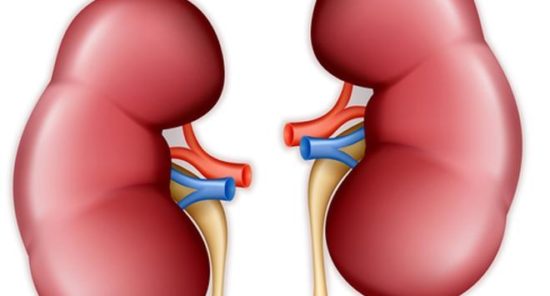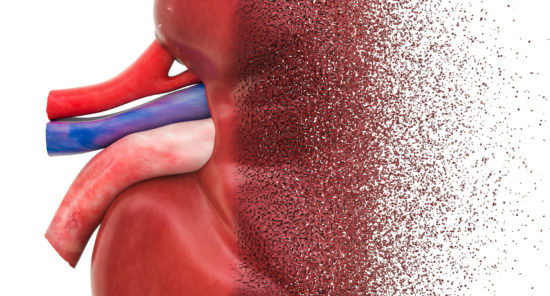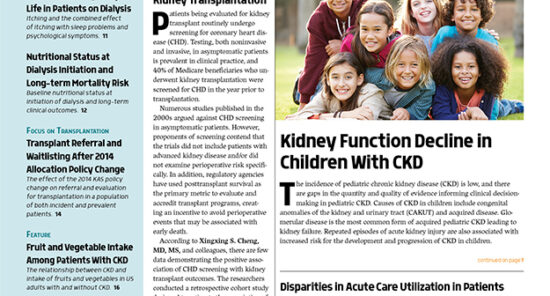Credit: Original article published here.According to Y. Diana Kwong, MD, and colleagues, there are few data available on the symptom burden and quality of life among patients with acute kidney injury treated with intermittent hemodialysis (AKI-D). The researchers conducted a prospective cohort study within a clinical trial (NCT04218370) comparing different hemodialysis schedules in patients with AKI-D. Results were reported during a poster session at the National Kidney Foundation Spring Clinical Meetings 2023. The poster was titled Understanding Symptoms and Quality of Life of Patients With AKI-D. Participants in the trial were from two large university health systems. They were asked to complete the dialysis symptom index (DSI) and to rate their overall health and quality of life in the past week on a scale of 1 (very poor) to 7 (excellent) at three time points. The cohort included 95 participants; of those, 64 completed the survey at study entry point. Six of the 95 declined to participate and 24 had altered mental status, leading to incompletion of the survey. Twenty-eight of the 64 initial study participants were followed to day 90. Loss to follow-up was related most commonly to an inability to contact the patient (n=10) and death (n=6). Of
Credit: Original article published here.Patients admitted to the hospital for pneumonia commonly develop acute kidney injury (AKI). Those who progress to AKI requiring dialysis (AKI-D) face increased risk for adverse outcomes. However, according to Sae X. Morita, MD, and colleagues, there are few data available on the risk factors for AKI-D in patients admitted with pneumonia and chronic kidney disease (CKD). The researchers conducted an analysis of data from the National Inpatient Sample for 2019 to examine the incidence of AKI-D among patients with CKD hospitalized for pneumonia. Results were reported during a poster session at the National Kidney Foundation Spring Clinical Meetings 2023 in a poster titled Risk Factors for Acute Kidney Injury (AKI) Requiring Dialysis in Patients With and Without Chronic Kidney Disease (CKD) During an Admission for Pneumonia Using a Nationally Representative Sample. The outcome of interest was AKI-D. Transplant recipients and those receiving maintenance dialysis were excluded. The analysis compared baseline characteristics in the CKD and non-CKD groups. Risk factors for AKI-D were determined using multiple logistic regression in separate models. The database identified 1,459,854 admissions with a primary diagnosis of pneumonia. Of those, 20% were in patients with CKD. Patients with CKD were older (75.9
Credit: Original article published here.Currently in the United States there are more than 500,000 patients with kidney failure on dialysis. The preferred treatment for kidney failure is kidney transplantation. Compared with dialysis, transplantation is associated with longer survival, better quality of life, and fewer hospitalizations. There are national policy directives for dialysis facilities designed to maximize access to transplantation and incentivize waitlisting. However, according to Rachel E. Patzer, PhD, MPH, and colleagues, only ~18.5% of patients with kidney failure are on the transplant waitlist. Further, there is significant variation in access to the waitlist and subsequent transplant. In December 2014, the United Network for Organ Sharing (UNOS) Organ Procurement and Transplantation Network (OPTN) implemented a policy that has had substantial impact on the way kidneys are allocated. Improvement in transplantation access equity was a major goal of the new kidney allocation system (KAS). The primary determinant of priority for organ allocation is allocation time. The new system changed the start of the allocation time from the date of waitlisting to the date of dialysis initiation (with the exception for pre-emptively waitlisted patients). Since the implementation of KAS, waitlisting has declined. It is unknown whether the decline was due to a
Credit: Original article published here.There is an association between nutritional status and survival among patients on dialysis. However, according to Sara Blumberg Benyamini, PhD, and colleagues, available data focus on patients who have undergone hemodialysis treatment for a minimum of 8 weeks. There are only limited data on the association between clinical outcome and baseline nutritional status at initiation of dialysis and any changes following dialysis initiation. The researchers conducted a retrospective observational study to examine how baseline nutritional status at the time of dialysis initiation, and the improvement or worsening of nutritional status during the first 3 months of dialysis treatments, affect survival for up to 5 years following the start of renal replacement therapy. Results were reported in the Journal of Renal Nutrition [2022;32(6):758-765]. During the study period of March 1, 2009, to March 1, 2019, 299 patients initiated hemodialysis at the Nephrology and Hypertension Department at the E. Wolfson Medical Center, Holon, Israel. Of those, 287 patients had data on initial nutritional score and first 3 months of nutritional score available. Nutritional status was determined using the Integrative Clinical Nutrition Dialysis Score (ICNDS) that is based on biochemical assessment of albumin, creatinine, urea, cholesterol, dialysis adequacy, C-reactive




